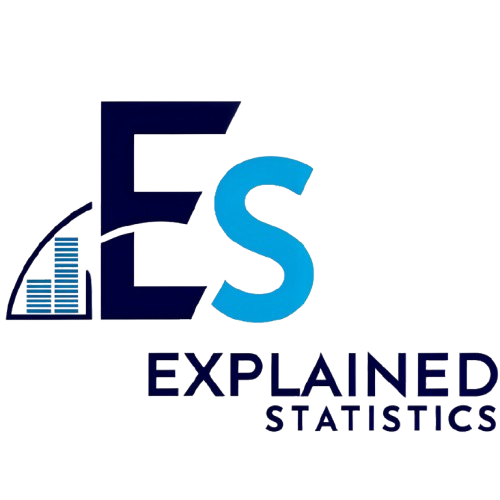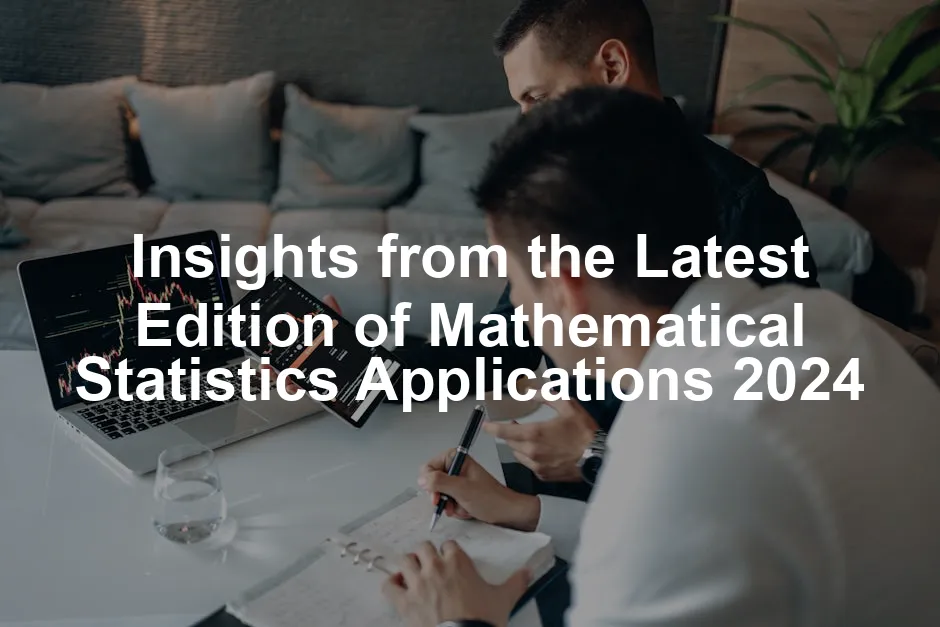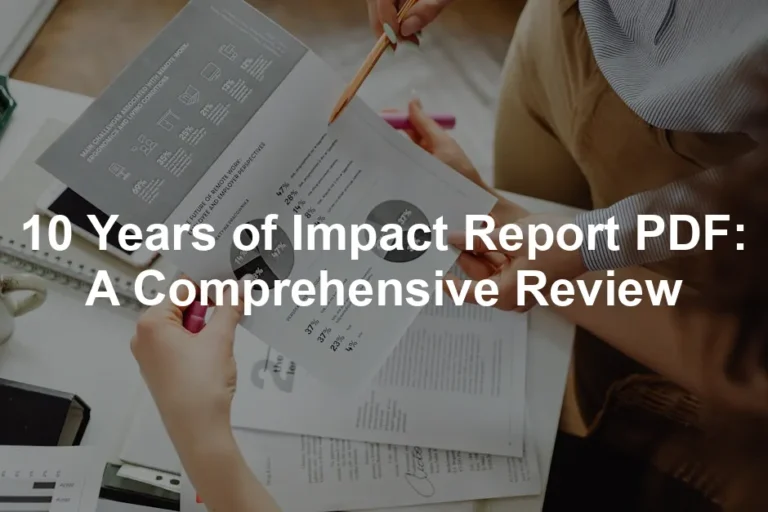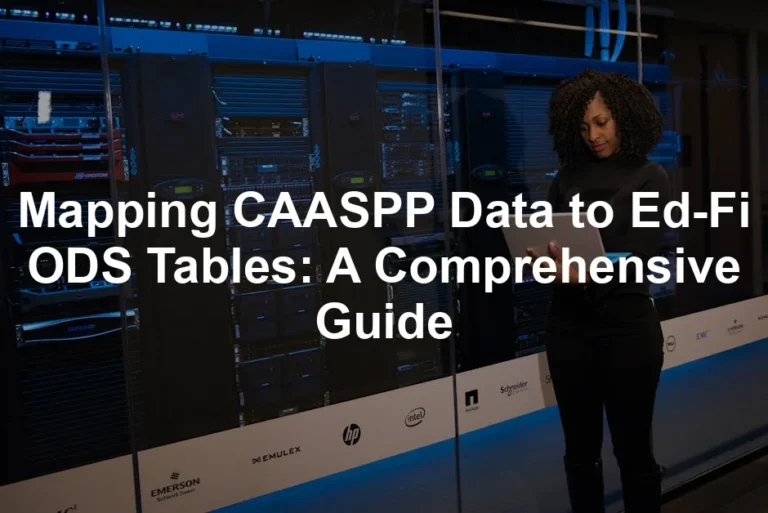Introduction
Mathematical statistics isn’t just a realm of numbers and formulas; it’s the backbone of decision-making in various fields, from finance to healthcare. The latest edition of “Mathematical Statistics Applications 2024” is a veritable treasure trove of insights that promise to revolutionize our understanding of statistical applications. Whether you’re a seasoned statistician or a curious novice, this edition is packed with cutting-edge research, innovative methodologies, and practical applications designed to elevate your statistical prowess. This year, the publication dives into fascinating topics like new estimation techniques, the nuances of hypothesis testing, and real-world applications that make statistical concepts come alive. Each article serves as a stepping stone, guiding readers through the complex yet rewarding landscape of statistics. The blend of theory and practice ensures that both students and professionals find value in its pages. But wait, there’s more! Interviews with leading statisticians provide an insider’s view of the future of statistical research. From new awards recognizing outstanding contributions to upcoming conferences that foster collaboration, this edition offers a comprehensive look at the current state of the field. So, grab your calculators and let’s explore what this year’s edition has to offer! Prepare to be informed, entertained, and maybe even inspired to take your statistical skills to new heights.
Summary of Key Points
The latest edition of “Mathematical Statistics Applications 2024” brings forth a bountiful harvest of insights that capture the essence of contemporary statistical research. Key highlights include:- Innovative methodologies that push the boundaries of statistical theory. The edition introduces advanced techniques in estimation and hypothesis testing that promise to enhance accuracy and reliability in data analysis.
- Case studies that illustrate the practical application of statistical methods in real-world scenarios. Topics range from public health impacts of maternal smoking to environmental statistics, showcasing how statistics can inform policy and practice.
- Interviews with prominent statisticians, offering a glimpse into the minds shaping the future of statistical research. Their discussions delve into the implications of emerging trends and the responsibility of statisticians in society.
- New awards and recognitions in the statistical community, including the establishment of the David Cox Medal for Statistics. This award honors original research that demonstrates conceptual depth, highlighting the importance of innovation in the field.
- Upcoming events and conferences serve as platforms for statisticians to share their work and collaborate. These gatherings not only foster knowledge exchange but also strengthen community ties within the statistical profession.

Thematic Insights from the 2024 Edition
Innovative Statistical Methodologies
Recent Advances in Estimation Techniques
The 2024 edition introduces groundbreaking estimation methods that are set to change the landscape of statistical analysis. Among these, the innovative Maximum Likelihood Estimation (MLE) techniques stand out. MLE is not just a fancy term; it’s a powerful method used to find the parameter values that maximize the likelihood of the observed data. This year’s research emphasizes its adaptation to complex models, enhancing accuracy and efficiency. Another notable method is the Bayesian estimation. Unlike traditional methods that rely solely on sample data, Bayesian techniques incorporate prior knowledge or expert opinion, leading to more robust conclusions. This flexibility is especially beneficial in fields where data is scarce or uncertain. Dive deeper into this fascinating approach with “Bayesian Statistics the Fun Way”, a great resource for understanding these concepts better. Furthermore, the introduction of machine learning algorithms into estimation processes is making waves. These algorithms can handle vast datasets, identifying patterns and relationships that traditional methods might overlook. For instance, regression models infused with machine learning techniques have shown improved predictive capabilities across various applications. These new approaches offer several advantages over traditional methods. They provide greater accuracy, especially in multi-dimensional data analysis, and allow for more nuanced interpretations of data. By adopting these innovations, statisticians can draw deeper insights, leading to more informed decision-making. If you’re looking to get started with data science, grab a copy of “R for Data Science” to enhance your skills further!
Hypothesis Testing Revisited
Hypothesis testing is a cornerstone of statistical inference. This edition presents a fresh look at various approaches to hypothesis testing, shaking up conventional wisdom. One major focus is the use of p-values. While p-values have long been the gold standard, criticisms about their misuse have led to alternative approaches gaining traction. The edition introduces the concept of the false discovery rate (FDR). This method controls the expected proportion of false discoveries among the rejected hypotheses, providing a more nuanced approach to statistical significance. This is particularly relevant in fields like genomics, where the volume of tests can easily lead to misleading conclusions. For a deeper understanding of statistical inference, consider checking out “Statistical Inference”. Another exciting development is the emphasis on Bayesian hypothesis testing. Unlike traditional methods, Bayesian approaches allow for the incorporation of prior beliefs and produce a posterior probability. This provides a richer interpretation of results, offering insights into the likelihood of hypotheses rather than a binary pass/fail. Practical examples from recent research studies illustrate these concepts in action. In one study, researchers applied these advanced testing methods to clinical trials, yielding more reliable outcomes. Such real-world applications highlight the relevance and necessity of evolving traditional hypothesis testing methods to meet contemporary challenges.
Real-World Applications of Statistical Methods
Case Studies in Public Health
Public health remains one of the most impactful areas for the application of statistical methods. This edition features significant case studies that spotlight the intersection of statistics and health. One compelling study investigates maternal smoking during pregnancy and its effects on infant health. By applying advanced statistical models, researchers uncovered a clear link between maternal smoking and increased risks of low birth weight and developmental issues. Another case examines the efficacy of public health interventions aimed at reducing smoking rates. Statistical analysis of data before and after policy changes helped to quantify the impact of these initiatives, providing invaluable insights for policymakers. For those interested in the intersection of statistics and business, “Statistics for Business and Economics” is a must-read to understand how data drives decisions in the corporate world. Check it out here. The implications of these findings are profound. By understanding the statistical relationships at play, public health officials can craft targeted campaigns that address specific risks, ultimately improving health outcomes. The edition emphasizes the critical role that statistical methods play in shaping effective public health strategies.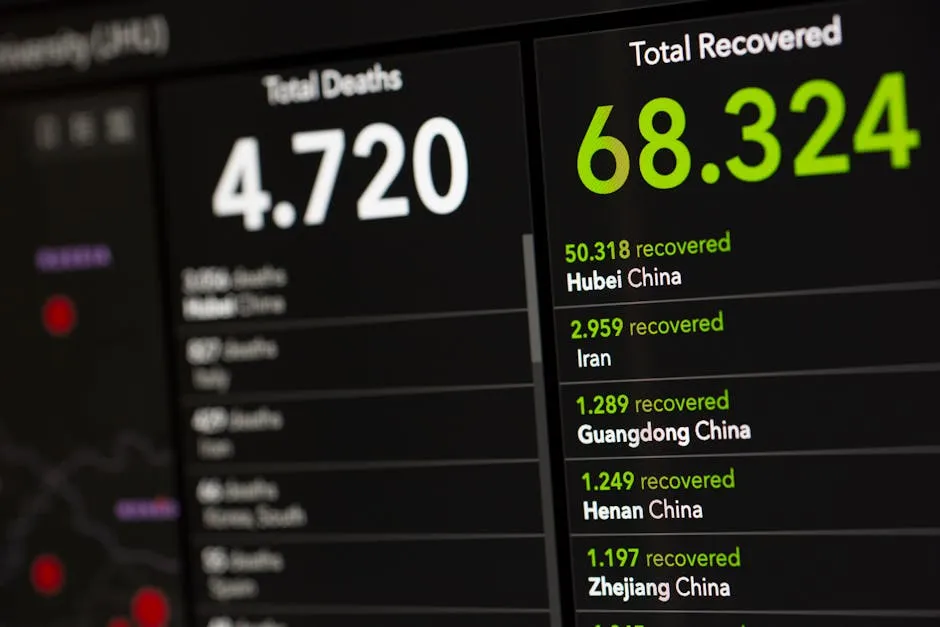
Environmental Statistics
The 2024 edition also highlights the application of statistical methods in environmental data analysis. A pressing example is the study of climate change effects on biodiversity. Researchers utilized advanced statistical models to analyze large datasets, revealing trends in species distribution and population dynamics. One case study focused on the impact of rising temperatures on migratory patterns of birds. By analyzing historical data alongside current observations, statisticians identified significant shifts in migration timing, raising concerns about the ecosystem’s health. To further explore environmental statistics, “Environmental Statistics: A Practical Guide to Data Analysis” can provide you with valuable insights—check it out here. Additionally, statistical tools are being employed to assess the effectiveness of conservation efforts. By analyzing data from protected areas, researchers can measure biodiversity changes over time, providing insights into the success of various strategies. These case studies illustrate the power of statistics in addressing environmental issues. They demonstrate how data-driven decisions can foster better management of natural resources and support sustainable practices, ultimately contributing to the preservation of our planet.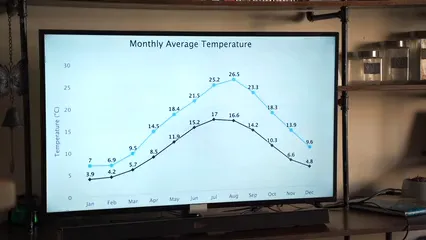
Interviews with Leading Statisticians
Insights from the Field
The latest edition of “Mathematical Statistics Applications 2024” features a series of enlightening interviews with some of the most influential statisticians in the field. These conversations reveal their thoughts on the future of statistics, the evolving landscape of data analysis, and the critical role statisticians play across various domains. Dr. Tilmann Gneiting, a prominent figure in statistical modeling, shared his insights on the integration of machine learning with traditional statistical methods. He believes that this fusion is not just a trend; it’s the future. “Statistical models will increasingly rely on machine learning techniques to enhance predictive capabilities. It’s about making sense of complex data in a way that’s actionable,” he stated. Gneiting emphasizes that understanding the principles of traditional statistics remains essential, as it provides the foundational knowledge necessary for interpreting machine learning results. In another interview, Dr. Bhramar Mukherjee discussed the impact of statistics on public health. She highlighted how statistical analysis was crucial in understanding the COVID-19 pandemic. “We’ve learned that robust statistical methods can save lives. It’s about more than numbers; it’s about making informed decisions based on solid evidence,” she remarked. Mukherjee’s work epitomizes the practical application of statistics in real-world scenarios, showcasing the importance of data-driven decisions in health policy. Dr. Barry Arnold, renowned for his work in nonparametric statistics, reflected on the ongoing challenges within the field. “The statistical community must continuously adapt to new data types and sources. As we move forward, it’s crucial to remain flexible and innovative,” he advised. Arnold’s perspective underscores the necessity for statisticians to evolve alongside the rapidly changing data environment. To further delve into practical statistical methods, consider “The Practice of Statistics” as a vital resource—check it out here. Additionally, Dr. Susan Athey, a leader in economics and statistics, elaborated on the intersection of these fields. “Statistics is not just a set of tools; it’s a way to understand the world. Economic data can inform policy, but we must ensure our methods are rigorous and transparent,” she explained. Her insights highlight the ethical responsibility statisticians have in their work, particularly when influencing economic policies that affect millions. The edition also features discussions on the emergence of new awards, such as the David Cox Medal for Statistics, which aims to recognize outstanding contributions to the field. This initiative demonstrates the community’s commitment to honoring innovation and excellence among statisticians. As the conversations wrap up, a common theme emerges: the future of statistics lies in collaboration, adaptability, and a strong ethical framework. These leading statisticians are not only shaping the field but are also inspiring the next generation to embrace the dynamic world of statistical applications. Their insights serve as a guiding light for aspiring statisticians and seasoned professionals alike, driving home the message that statistics is not merely about data—it’s about making informed choices that lead to meaningful outcomes across various sectors.
FAQs
What are the main themes of the 2024 edition?
The latest edition focuses on innovative methodologies, real-world applications, and insights from leading statisticians. It showcases cutting-edge research that pushes the boundaries of statistical theory and practice. You’ll find discussions on diverse topics that highlight statistics’ role in various fields, ensuring a comprehensive understanding for readers.
How can I access this edition?
You can easily access the latest edition by downloading it from the Institute of Mathematical Statistics website. All issues are available in PDF format for your convenience. Simply visit their archive section, and you’ll be able to explore the rich content this edition offers.
Are there any notable awards mentioned in this edition?
Absolutely! The edition announces the establishment of the prestigious David Cox Medal for Statistics. This award aims to recognize original research in statistical theory and methodology, further encouraging innovation and excellence in the field. It’s a significant addition to the statistical community, honoring the legacy of a true pioneer, Sir David Cox.
What kind of case studies are featured?
The edition features a diverse range of case studies, including those that tackle public health issues and environmental statistics. These case studies illustrate how statistical methods can be applied to real-world problems. From analyzing maternal smoking impacts on infant health to studying climate change effects on biodiversity, the versatility of statistical applications is prominently showcased.
How does this edition contribute to the field of statistics?
This edition makes a substantial contribution to the field by providing cutting-edge research and practical applications. It serves as a platform for discussion among statisticians and practitioners, fostering collaboration and innovation. The insights shared in this edition are set to inspire future research and enhance the overall understanding of statistical applications in various sectors.
Please let us know what you think about our content by leaving a comment down below!
Thank you for reading till here 🙂
All images from Pexels
